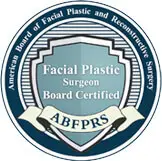

The eyes are the most captivating feature of your face and are often called the “window to your soul.” As we age, the skin above our eyes droops or sags over time, either making one look old and tired, or possibly even impairing your ability to see.
At Facial, Plastic, Reconstructive and Laser Surgery, our team of elite surgeons are Board Certified by the American Board of Ophthalmology, American Board of Otolaryngology – Head and Neck Surgery – and the American Board of Facial, Plastic and Reconstructive Surgery.
Our surgeons are leading experts in all areas of cosmetic and functional eye surgery, including Poughkeepsie eyelid surgery (blepharoplasty), Asian eyelid reshaping, oculoplasty, eye reconstruction and more.
Additional Procedures Performed
Ptosis is the medical term for drooping upper eyelids. Ptosis can occur in one or both upper eyelids. The most common cause of ptosis is a loosening of the connection between the muscle that raises the eyelid (the levator palpebrae), and the rigid support structure of the eyelid (the tarsus). Ptosis can also be caused by muscle and neurological disorders, a history of eye surgery, trauma, and even long-term contact lens use.
A normal, healthy eyelid should have a natural tension that allows it to cover and protect the eyeball. Occasionally, as a result of aging, sun exposure, trauma, or scarring, eyelid tension can become unbalanced, causing the eyelid to turn outward or inward. When the eyelid turns outward, that is called ectropion. The out-turned eyelid may become red and irritated, resulting in discomfort, tearing, or eye infections. When the eyelid turns inward, it is called entropion. The in-turned eyelashes can irritate the eye, resulting in discomfort, redness, and corneal damage.
Skin cancers and benign tumors often occur on the eyelids. Because of the thin skin of the eyelid and its complicated anatomy, oculofacial plastic surgeons are the most trusted physicians involved in removing cancers and benign tumors of the eyelids, and reconstructing the remaining defect. Cysts, skin tags, bumps, chalazions (styes) and other benign lesions of the eyelids can be removed or drained in the office under local anesthesia. There is usually no downtime after these procedures.
The most common skin cancers that occur on the eyelids are basal cell carcinoma and squamous cell carcinoma. It is important to have any new eyelid bumps examined because skin cancers can often masquerade as benign lesions.
Mohs surgeons are qualified to remove eyelid tumors, and Dr. Kashyap will work with the Mohs surgeons to reconstruct defects after Mohs surgery. After the skin cancer is removed, a defect of varying size remains in the eyelid. There are various methods used by oculoplastic surgeons to reconstruct eyelid defects depending on the size and location of the defect. Smaller defects may be closed simply, but larger defects may involve complex reconstructions that may take multiple steps and require tissue or skin grafts. Dr. Kashyap will discuss their assessment with you and go over your personal plan and what to expect after surgery during your preoperative visit.
Cysts, skin tags, bumps, chalazions (styes) and other benign lesions of the eyelids are very common. Cysts and skin tags can be removed or drained in the office under local anesthesia. There is usually no downtime after these procedures. Lesions that involve the eyelashes or eyelid margin, may require a slightly more extensive procedure called a wedge resection, in which a small section of the eyelid surrounding the lesion is removed, and the edges of the defect are sutured together. This procedure is usually performed in the operating room under sedation.
Chalazions, also known as styes, are bumps that develop at the eyelid margins. They are caused by a blockage in the meibomian glands, specialized glands in the eyelids that produce oils that are an important component of tears. They often resolve spontaneously in 1-2 weeks. Warm compresses and eyelid scrubs may help. If they do not resolve after about 2 weeks, a simple in-office drainage may be performed with local anesthesia.
Larger lesions may require a more complex reconstruction. Dr. Kashyap will discuss their assessment with you and go over your personal plan and what to expect after surgery during your preoperative visit.
Tears are produced by the lacrimal gland, located above the eye. The tears constantly wash over the eye to keep it lubricated, and drain into the tear duct (or lacrimal drainage system) which is a series of ducts that allow tears to flow from the inner corners of the eyelids, and into the nose. A functional tear duct is the reason why you have to blow your nose when you cry – the tears drain into your nose and it becomes runny.
Excessive tearing is a very common problem and may be due to many different causes.
Over-production – An overproduction of tears is often reflexive tearing due to dryness and irritation of the eyes, or a blockage of the drainage system of the tears. Treating the dry eyes, sometimes by simply using artificial tears, will stop the reflexive tearing.
Blockage of the lacrimal drainage system – When any part of the tear drainage system is blocked or narrow, the tears well up in the eyes and flow over onto the cheek. Picture your eye as a bathtub in which the faucet is constantly running. A blockage of the tear drainage system is akin to plugging the drain. Eventually, the water overflows onto the floor.
When the lower eyelids sit too low on the eye, or have a rounded appearance, that is called lower eyelid retraction. This condition may be caused by previous lower eyelid surgery such as blepharoplasty, scarring due to long-term sun exposure or trauma, or thyroid eye disease. Upper eyelid retraction is when the upper eyelid sits too high on the eye and is usually caused by thyroid eye disease or scarring.
Thyroid disease, also called Graves’ disease, may cause several eye deformities including:
Graves’ disease is an autoimmune disease. We do not know what causes it. Seeing an endocrinologist for management of thyroid hormone levels is important. However, normalizing thyroid levels does not necessarily result in an improvement of the eye deformities caused by Graves’.
Enucleation is a surgery in which the eye is removed while leaving the eye muscles and orbital contents intact. Removing an eye may be necessary when a tumor has been discovered in the eye, if a blind eye has become painful, or in the case of severe trauma. Sometimes, removing an eye is the only remaining solution to eliminate pain associated with a blind eye. After the eye is removed, an ocular prosthesis is worn in its place. Ocular prostheses – also known as artificial eyes – nowadays are so well-made, that many people will not notice that you have a prosthetic eye.
Various types of tumors may arise from the orbit, also known as the eye socket. The most common ones include vascular tumors such as cavernous hemangiomas, orbital lymphoma, lacrimal gland tumors, cysts, and metastases that have spread from other parts of the body. Some inflammatory processes such as sarcoidosis or idiopathic orbital inflammation may mimic the signs and symptoms of a tumor.
Orbital tumors may present slowly over months or years, with bulging of the eye, or a subtle change in the eye position due to pushing from the tumor. Some tumors present rapidly and are very painful, this presentation is typical of malignant tumors and should be evaluated by an oculofacial plastic surgeon without delay. Tumors may cause compression of the optic nerve, resulting in vision loss. Imaging such as a CT scan or MRI may be obtained if a tumor is suspected.
Management of orbital tumors should be done by a physician who is qualified to treat orbital disease, such as an oculofacial plastic surgeon. Dr. Kashyap has received extensive specialty training in orbital surgery and the management of orbital disease.
Facial paralysis occurs when the facial nerve, which controls the facial muscles, stops functioning or weakens. Facial paralysis has many possible causes, the most common include Bell’s palsy (unknown cause), stroke, previous brain surgery, infection, trauma, or a tumor. When the facial muscles around the eye become weak or paralyzed, the health of the eye may be compromised. Typical findings and management of facial paralysis include: Brow drooping; Incomplete eyelid closure (Lagophthalmos); Poor or absent blinking; Lower eyelid laxity, ectropion, and retraction. Patients with facial paralysis may have some or all of these problems depending on the severity and duration of the paralysis. Dr. Kashyap will discuss her assessment with you and go over your personal plan and what to expect after surgery during your preoperative visit.
Benign essential blepharospasm is a rare condition that causes increased blinking, involuntary spasms of the muscles surrounding the eyes, and an intermittent inability to open the eyes. The condition usually starts with twitching and progresses to more severe spasms. We do not know what causes this condition. Patients with this condition may eventually be unable to read, drive, or perform normal daily activities because they cannot open their eyes sufficiently.
Trauma to the eyelids and/or orbit (eye socket) should be examined thoroughly by an ophthalmologist and oculofacial plastic surgeon. The eye is often involved in this type of facial trauma so a careful eye examination should be performed without delay.
Trauma to the eyelids may result in lacerations (cuts to the skin) that may involve the entire thickness of the eyelid margin (where the lashes are located), and/or the tear duct system. Inadequate surgical intervention for these types of injuries may result in eyelid deformity, incomplete eyelid closure, or tearing problems. Oculofacial plastic surgeons have had extensive training to treat these injuries and ensure proper healing. Eyelid lacerations may often be surgically reconstructed in the office under local anesthesia. More complex eyelid trauma, especially when involving the tear duct system, may require reconstruction in the operating room under sedation.
Blunt trauma to the eye from an assault, a fall, or a sports related injury may result in a fracture of the eye socket, also known as an orbital fracture. The most common type is a fracture of the floor or medial wall (the wall located between the eye and the nose) known as a “blow-out” fracture. A blow-out fracture results in sinking of the orbital contents through the bony defect, which can cause the eye to sink back into the orbit, a condition called enophthalmos. Orbital fracture repair is performed to prevent the eye from sinking back into the orbit. If enophthalmos is already present, surgical fracture repair and orbital reconstruction may be performed to move the eye back into a normal position.
The decision to perform a fracture repair surgery depends on the appearance of the fracture in a CT scan, and the clinical examination. A fracture repair surgery generally involves making an incision behind the eyelid (this spares the skin so that there is no scarring). Once the fracture is located, a piece of titanium mesh (sometimes combined with a biocompatable material called Medpor) is placed over it to cover the defect. The surgery is performed under general anesthesia, and patients may expect to go home the same day.
If you have any questions, or would like to schedule a consultation, please contact our Concierge Patient Coordinators at (845) 454-8025 or email us at info@NYfaceMD.com. We proudly serve New York, the Hudson Valley, Westchester County and the tri-state area. For V.I.P. and out-of-town patients, please contact us.































